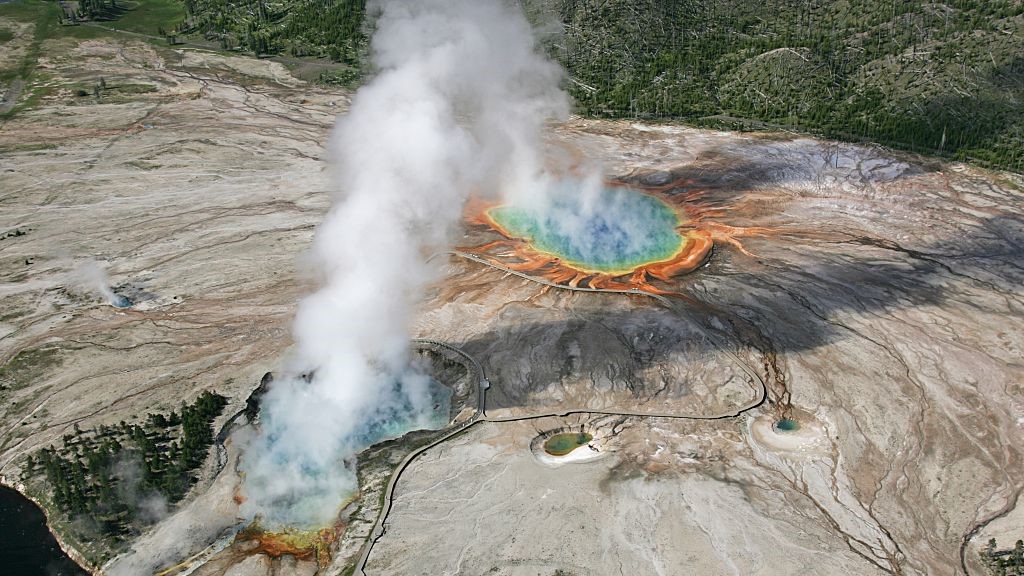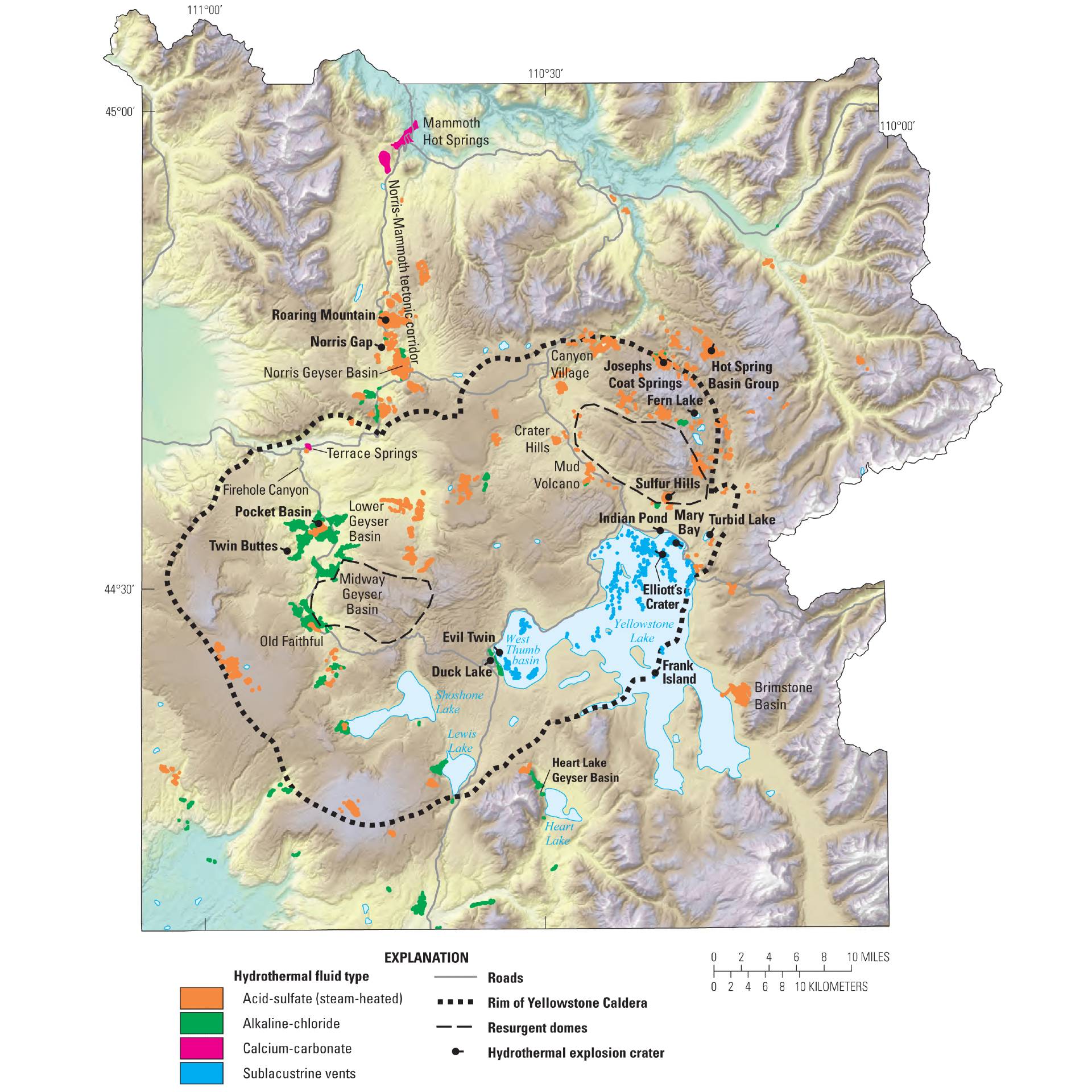New mud-slinging thermal feature at Yellowstone is spewing scalding hot muck
The unrest may be due to slight changes in pressure or in the amount of water seeping into the underground reservoir system.
A newly formed thermal feature has violently erupted into life in Yellowstone National Park, forcing park rangers to close off a section nearby after it showered the boardwalk with a blistering mixture of water, soil and sinter — mineral deposits that are precipitated from hot springs.
And in a further sign that the park's hydrothermal systems are acting up, geysers that have been inactive for five years are warming up and throwing scalding water around.
"The activity seems to have started on May 24," Michael Poland, a research geophysicist and scientist-in-charge at the Yellowstone Volcano Observatory, told Live Science in an email. "These hydrothermal systems are incredibly dynamic — the one constant is change."
Geysers are a type of hot spring characterized by a pipe-like hole in the ground that connects to a subsurface reservoir of water. Molten rock several miles deep inside Earth's crust heats the water to boiling point, which builds pressure in the chamber and forces water up toward the surface. The remaining water begins to steam and eventually builds enough force to eject a scorching column of water into the air.
Related: Is the Yellowstone supervolcano really 'due' for an eruption?
The recent burst of activity occurred on Geyser Hill, near the famous Old Faithful geyser. But after two weeks of turmoil, things are slowly cooling down. "There is still some restlessness in the area, but it is calming," Poland said. "The features are not erupting as frequently."
Yellowstone is home to the world's largest and most densely packed collection of thermal features, with more than 10,000 geysers, hot springs, mud pots and steam vents spewing water, mud and gas. As such, the recent activity is nothing unusual, and Geyser Hill will probably return to its previous state, Poland said. The new feature could remain intermittently active, in which case park rangers may have to reroute the boardwalk.
Get the world’s most fascinating discoveries delivered straight to your inbox.
The increase in temperature and eruptions in the area could be due to tiny shifts in pressure. "You can think of the system a bit like the plumbing in an old house," Poland said. "The pipes are corroded and might contain lots of mineral deposits, and small changes in pressure within the system can cause leaks to form."
The unrest could also be due to more water seeping into the underground chambers. "There was an awful lot of snow in Yellowstone this past year, so the runoff means there is more water in the subsurface," Poland noted.
"All of these factors together can influence how geyser and hot spring systems behave, and change over time," Poland added.
The recent unrest is similar to a period of thermal disturbance that caused violent eruptions in September 2018, including a rare eruption of the Ear Spring geyser, from which 80 years of human trash poured out. At the time, 30-foot-tall (9 meters) blasts of steaming water sprayed a variety of debris out into the surrounding landscape, such as coins, hats, a cinder block and a pacifier from the 1930s.

Sascha is a U.K.-based staff writer at Live Science. She holds a bachelor’s degree in biology from the University of Southampton in England and a master’s degree in science communication from Imperial College London. Her work has appeared in The Guardian and the health website Zoe. Besides writing, she enjoys playing tennis, bread-making and browsing second-hand shops for hidden gems.




